Review: 2010 Honda Insight EX
Less than a generation ago, speed was the name of the game. Hands-on automotive enthusiasts would swap their car’s two-barrel carb for a four, replace the manifold, straighten the exhaust, anything and everything to make their ride go faster (at least in a straight line). Even the mechanically ignorant knew that power equaled status, whether under-hood or at their fingertips (windows!). These days, consumption is no longer a disease—it’s an addiction. Where once we laughed watching my buddy Artie’s ’69 Camaro’s fuel needle fall, the new Honda Insight has a needle showing me how much fuel I’m saving. It’s not a very clever insight, but the Insight is a very clever car.
At first glance, the Insight reveals itself as the Prius’ fraternal twin. The flattering imitation separates the Insight from its dopey looking predecessor, and places the new car squarely on the Toyotagas – electric coattails. The Insight’s shape is pleasing, like a large juicer. It’s just not stirring. The Insight gets a bonus star for being a five-door, the practicality of which seems lost on my native country. It won’t be lost on the Insightful.
Who cares? The car’s raison d’être lies underneath the skin. Thin skin. While the Insight’s not as tinny as I’d expected, a word to the wise: don’t crouch behind the car when the shooting starts. What insulation I saw—looking around the spare tire—felt too light to exist. Of course, it’s all part of the mission: do less with less.
To that end, the Insight comes with a bigger version of the powerplant than the one powering the original, two-seat Insight. Honda’s Integrated Motor Assist (IMA) hybrid system is an 88 horsepower 1.3-liter four-cylinder gas engine with a 13 hp electric sidekick, served by a nickel-metal hydride battery pack. The electric motor powers the Insight up to 30 mph without any help. The engine turns off sometimes (e.g., when you’re looking for a parking spot, obeying the school zone speed limit or stuck at a light), but the engine’s shaft doesn’t cease so it’s not as disconcerting as it sounds.
The IMA’s performance is remarkable not for traditional thrills—the ’83 Civic was more fun to drive—but the ho-humness of the whole thing. The 2010 Honda Insight EX’s power comes on slowly and smoothly like an economy car. It’s not dangerously slow; there’s just no entertainment value. It’s not like you can downshift, spool up and goose the little bastard.
The Insight’s continuously variable transmission bars you from any thrill search. I’m pretty sure they sourced it from a dentist drill supplier. The sound alone dissuades you from hard acceleration. The Formula 1 style “gear-changers” on the EX’s steering wheel don’t help. How could they? It’s a CVT. I’m still trying to figure that part out. Anyway, the gear-changers are like flippers on a runway model. Like paddles on a submarine. I can’t . . . never mind. They’re only on the EX. Pretend they’re decorations.
The Insight’s ride was firm but not harsh and actually kind of tight. Up and down a few ramps I started wondering what the car would be like if we popped off the low rolling resistant tires and put some decent skins on the puppy. The response and roll hinted that the chassis was capable of much more than the rest of the car would ever allow.
Like the brakes for instance: antilock with electronic force distribution. The regenerative system stops the car well enough sending energy back to your batteries where it can do some good. But the system creates an odd drag and crusty feel that, again, dispirits the Transporter within. For regular old driving, though, no one’s going to complain.
Because they’re going to be paying attention to other things. You can see the 2010 Honda Insight EX’s owners paradise by dashboard lights. A digital speedometer sits center, in a halo, the shade of which tells you whether you’re driving like an Earth-loving angel or the speed-demon you’ve always been. The Insight provides its namesake in the form of graphs and charts you can scroll through to see your average miles per gallon, battery power, time until oil change, life, hit points and number of sparkly gems you’ve picked up on your journey.
It’s not a video game and I don’t mean to reduce the effect which is optimization of your car’s performance, something my buddies and I used to spend a lot of time doing. The measure’s just different. MPG over quarter mile time. An arguably more noble pursuit. Safer, too, the way Honda does it. The colors give you feedback without distraction. Brilliant.
Combined with the Insight’s Eco button—a kind of anti-Nitrous switch that puts the car into super conserve mode—the gauges and lights serve as new substitutes for a gear shift and tons of torque. It helps make you a more controlled, responsive driver . . . in terms of economy. I averaged 37 mpg. I know I can do better. It’s a different game and the Insight is pretty damn good at it. Toyota’s a playa. And, now, so is Honda.
More by Michael Martineck
Latest Car Reviews
Read moreLatest Product Reviews
Read moreRecent Comments
- MaintenanceCosts Nobody here seems to acknowledge that there are multiple use cases for cars.Some people spend all their time driving all over the country and need every mile and minute of time savings. ICE cars are better for them right now.Some people only drive locally and fly when they travel. For them, there's probably a range number that works, and they don't really need more. For the uses for which we use our EV, that would be around 150 miles. The other thing about a low range requirement is it can make 120V charging viable. If you don't drive more than an average of about 40 miles/day, you can probably get enough electrons through a wall outlet. We spent over two years charging our Bolt only through 120V, while our house was getting rebuilt, and never had an issue.Those are extremes. There are all sorts of use cases in between, which probably represent the majority of drivers. For some users, what's needed is more range. But I think for most users, what's needed is better charging. Retrofit apartment garages like Tim's with 240V outlets at every spot. Install more L3 chargers in supermarket parking lots and alongside gas stations. Make chargers that work like Tesla Superchargers as ubiquitous as gas stations, and EV charging will not be an issue for most users.
- MaintenanceCosts I don't have an opinion on whether any one plant unionizing is the right answer, but the employees sure need to have the right to organize. Unions or the credible threat of unionization are the only thing, history has proven, that can keep employers honest. Without it, we've seen over and over, the employers have complete power over the workers and feel free to exploit the workers however they see fit. (And don't tell me "oh, the workers can just leave" - in an oligopolistic industry, working conditions quickly converge, and there's not another employer right around the corner.)
- Kjhkjlhkjhkljh kljhjkhjklhkjh [h3]Wake me up when it is a 1989 635Csi with a M88/3[/h3]
- BrandX "I can charge using the 240V outlets, sure, but it’s slow."No it's not. That's what all home chargers use - 240V.
- Jalop1991 does the odometer represent itself in an analog fashion? Will the numbers roll slowly and stop wherever, or do they just blink to the next number like any old boring modern car?
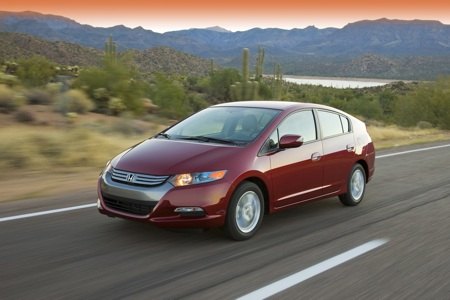




















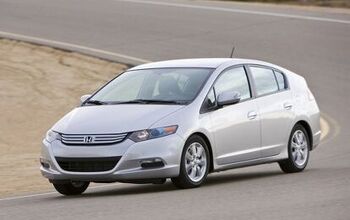
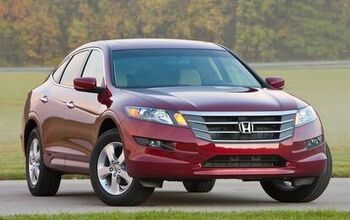
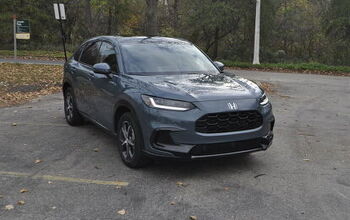

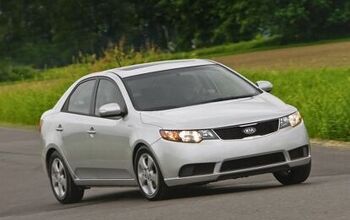










Comments
Join the conversation
Looked at the 2010 Insight in the showroom while my 2005 Acura TL was being serviced. With its fold-down rear seats, I'm pretty sure I can carry more and larger stuff in the Insight that I can in the TL. And I rarely have even two people in the car and never four. My '05 TL has all of 28,000 miles on it. Every day I drive to work eight miles one way on city streets. Not exactly high performance driving. My 228 horsepower V-Tech engine's computer informs me that I average 18 MPG ... and 18 MPH. I need 228 HP burning premium gas to average 18 MPH?? Yeah, right. This Insight golf cart fully loaded for $23K (including navi, MP3 input, HandFreeLink Bluetooth phone connectivity, USB input, cloth seats, 100k mile guarantee on the NiMH battery) looks like the perfect car to get me to and from work day after day in stop-and-go straight-line rush hour traffic on Pacific Coast Highway at 18 MPH. I have to admit I enjoy getting into my TL every day since I bought it and it is a very nice car indeed, but the Insight's reduced cost of ownership (gas, insurance, registration, etc) is looking pretty attractive.
My daughter who goes to college purchased a used 2010 Honda ex. She had been shopping around car dealerships looking for something within her price range with reliability and good gas mileage. Never having owned a Honda before, but knows a lot of people who do and questioning them first. All of her other vehicles she has had in the past seemed to end up being money pits, weather it be gas guzzlers and or mechanical problems. She found the Toyota Prius cost to be much higher, yes affordability comes in to play. She did purchase the 2010 Honda EX, and just loves it. She talks about how it teaches you how to be a better/more gas efficient driver, Loves the friendly dash board displays. And ( like most reviews ive read from other owners) , is getting an average of 45 mpg city, and closer to 55 mpg highway. For some student that has had the big engine vehicles to smaller but peppier cars, she still loves this Honda. And even the looks of the car, interior as well as exterior. She knew what she was looking for , what price range, and all the other factors upon buying a used vehicle. I'm sure she pissed off a lot to car dealership salesmen by walking away from them day after day. Also she had the Honda checked out by her own mechanic first, everything was ok except the rear tires had dry rot and were cracking, which the dealership agreed to replace and did. She has now been enjoying this car for quite some time now. No problems what so ever. I guess with reading all the personal reviews here, I just wanted to say that beauty is in the eye of the beholder. And for people who buy any Hybrids, I personally think its great, no matter what company produces them. Personally I don't have one, but I don't wish and wouldn't put down anyone for having one of any make or model. As a dad of a college student, I'm proud of her decision and wish her the best.